Coffee Farm Lists
-
Preparation method of Blue Mountain Coffee Flavor

Pour a whole bag of top products into a cup, add 180C.C hot water, stir well and serve! Cold drink first pour a whole package of products into a cup, add 180C.C hot water, and put it in the refrigerator after cooling. After about four hours, cold coffee and milk tea will wash your mind and completely freeze the muggy summer. From above we can understand the size of Blue Mountain Coffee.
2016-05-29 Blue Mountain Coffee Flavor production method Hot drink whole bag Top Product pour into -
Introduction to the taste of Honduran coffee

The granules of coffee beans in Honduras are large in shape, uniform in size and glossy in color. In order to facilitate harvesting, farmers will prune the coffee trees to no more than 150 centimeters, because if they grow too high, they have to set up ladders to pick, which is not only time-consuming, but also may damage the trees by bending branches. As the ripening period of each fruit of the coffee bean is different, it is necessary to keep the coffee bean in good condition.
2016-05-29 Honduras Coffee introduction Taste Type Coffee beans granules outside -
Flavor Coffee Manor in Honduran Coffee region

Flavor and taste characteristics: good flavor, rich and mellow, suitable for mixed drinking. Honduras is located in the north of Central America, facing the Caribbean Sea to the north, the Gulf of Fonseca in the Pacific Ocean to the south, Nicaragua and El Salvador to the east and south, and Guatemala to the west, mostly mountains and plateaus. It has a tropical climate, mild temperature and abundant rainfall, so it is an ideal place for coffee growth. Honduras
2016-05-29 Honduras Coffee producing area Flavor Manor Taste characteristic good abundant -
What are the seven major coffee producing areas in Guatemala

Guatemala has seven major coffee producing areas: Antigua,Coban,Atitlan,Huehuetenango,Fraijanes,Oriente and San Marcos. The coffee beans in each producing area have their own characteristics, and they have won a lot of praise for Guatemala in the international community, especially the perfect harmony of Antigua's sour, sweet and mellow texture; add a hint of smoky taste to emphasize its
2016-05-29 Guatemala coffee seven producing areas major -
What are the seven major coffee producing areas in Guatemala

Guatemala has seven major coffee producing areas: Antigua,Coban,Atitlan,Huehuetenango,Fraijanes,Oriente and San Marcos. The coffee beans in each producing area have their own characteristics, and they have won a lot of praise for Guatemala in the international community, especially the perfect harmony of Antigua's sour, sweet and mellow texture; add a hint of smoky taste to emphasize its
2016-05-29 Guatemala coffee seven producing areas major -
Origin flavor of Salvadoran coffee
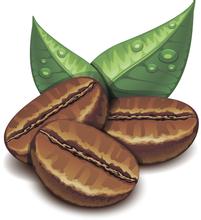
Taste characteristics: sour, bitter, sweet mild and moderate. Salvadoran coffee ranks side by side with Mexico and Guatemala as the producers of Asa and Merdo, and is fighting for the top one or two places in China and the United States with other countries. The highlands of origin are large coffee beans of all sizes, which are fragrant and mild in taste. Like Guatemala and Costa Rica, coffee in El Salvador is based on altitude.
2016-05-29 El Salvador coffee origin flavor taste characteristics sweetness mild moderate sa -
Costa Rican coffee taste and taste

Costa Rican coffee has full particles, ideal acidity and unique strong flavor. Costa Rica's coffee industry, originally controlled by the Costa Rican Coffee Industry Company (InstitutodelCafdeCostaRica, ICAFE), has been taken over by the official Coffee Committee (OficinadelCaf). In exported coffee, those products that are considered to be of substandard quality are used in blue.
2016-05-29 Costa Rica coffee taste flavor granules -
Coffee Bean Brand Coffee Coffee Origin

India: Malabar, Karnataka, Tellichery Yemen: Mocha Sanani, Mattari Indonesia: Java, Mandheling, Ankola, Kopi Luwah Mexico: Coatepec, Huatus
2016-05-29 Coffee beans Brands Coffee varieties Origin India Malaba Rabbah Mala -
What types of coffee beans are there? What are the processing methods for coffee beans?
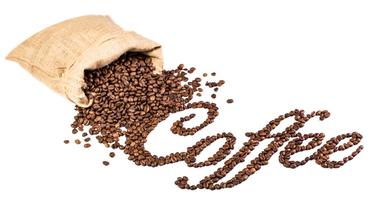
Brazilian Coffee Bean Origin: Brazil is of excellent quality and is considered an indispensable bean when mixing. The quality type is divided into NO.1, NO.2, Screen18~19, which is the most popular and widely used. Characteristics: Fragrance--medium, sweet--strong, acid--medium, alcohol--medium, bitter--weak. Italian coffee beans origin: mainly Arabica beans, Indonesian coffee beans mainly. Characteristic: Fragrance--Strong
2016-05-29 coffee beans some kind what processing way brazil origin taste -
What kind of coffee beans are there?

Brazil: Santos, Bahia, Cerrado, Mogiana Mexico: Coatepec, Huatusco, Orizaba, Maragogype, Tapanchula, Huixtla, Pluma
2016-05-29 Coffee beans all what variety and Brazil Toast Santo -
Coffee beans summarize what color the coffee beans are

The color of coffee beans is dark and light. Do you know what it means? A few days ago, coffee fans finally got the hang of it at Starbucks' espresso expert event. Coffee beans range in color from grass green to yellowish orange, light jade cinnamon to dark brown, the most ideal of which is dark brown. Because the longer the roasting time of high-quality coffee beans, the more natural volatile oil will be generated from the surface.
2016-05-29 Coffee beans summary what is it color -
What details do you need to pay attention to when drinking coffee?
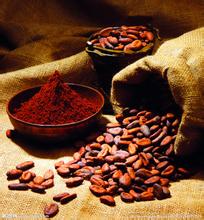
The first step is to smell the fragrance and taste the original aroma of coffee; the second step is to observe the color, the coffee had better be dark brown, rather than pitch black, deep to the bottom; the third step, taste, first take a sip of black coffee, feel the taste of the original coffee, the coffee entrance is not in a hurry to swallow the coffee, it should be temporarily contained in the mouth, let the aroma of coffee exhale through the nose, and then
2016-05-29 Coffee etiquette need attention what details the first step smell incense taste once -
The steps of coffee how to make coffee
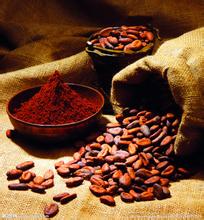
Method / step Caffe Latte latte is the most familiar espresso item in Chinese. It is fancy coffee with equal proportion or even more milk added to the thick and full-bodied Espresso. With the warm seasoning of milk, the original sweet and bitter coffee becomes smooth and sweet, so that even those who are not used to drinking coffee can not compete with the fragrant taste of latte. And cappuccino.
2016-05-29 Coffee method step should how make latte coffee -
What kind of coffee do you have? the origin and practice of coffee

Brazil-named after the producing country, produced in South America, also known as Sandoz, Brazil is the world's largest coffee producer. Features: when the coffee bean germ is very fresh, it is artificially refined and naturally dried in the vulva for about 60-70 days, so that the sweetness of the pulp fully seeps into the bean.
2016-05-29 Coffee everything what kind origin practice Brazil -
The origin of coffee. What are the legends and myths of coffee?

The Legend of Coffee there are many legends about the discovery of coffee, one of which is according to Rothschild, a Roman linguist. Neroy (1613-1707) records: about the sixth century AD, when an Arab shepherd Caldai was herding sheep to the Isobian prairie, he was very excited and excited to see each goat. He was very surprised. After careful observation, he found it very strange.
2016-05-29 Coffee origin all have what legend myth coffee existing variety -
The classification of coffee the culture of coffee

Coffee classification editor coffee trees can be roughly divided into five types, of which Arabica and Robusta are the more common. Arabica species, which account for more than 70% of the world's total output, are generally grown on slopes above 900 meters above sea level and are mostly found in tropical high-altitude areas such as Central and South America, East Africa, Southeast Asia and Hawaii. Its pleasant aroma and rich nourishment
2016-05-29 Coffee classification culture coffee editing roughly divided into 5 categories of which -
Types of coffee beans introduce the planting methods of coffee trees
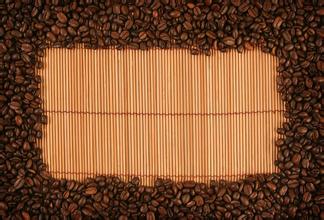
At present, coffee beans are grown in about 66 countries in the world, among which they can be classified as Arabica, Robusta and Liberica. Arabica is the largest major variety of coffee beans, accounting for about 80% of its aroma and quality. Robusta is mostly used to make instant coffee because of its poor quality. Liberica is seldom mentioned because of its poor quality and low yield. Coffee
2016-05-29 Coffee beans types introductions coffee planting methods at present worldwide about 66 -
Indonesian Coffee introduces the country's brief History
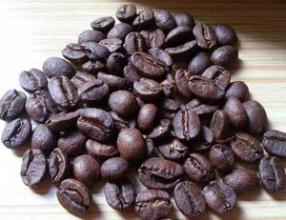
A brief History of Coffee in 1696, the Governor of the Netherlands in Malabar, India, gave a batch of coffee seedlings to the Governor of the Netherlands in batavia in Batavia (present-day Jarkata in Jakarta). This was the first time that coffee was grown in Indonesia. However, the first batch of coffee seedlings were washed away by the flood. In 1699, Batavia received the gift again. This time, the coffee seedlings survived and came first in 1701.
2016-05-29 Indonesia coffee introduction country brief history 1696 -
Quality of coffee brewing method in Tanzania

The coffee beans are of extraordinary quality and are produced in the Mohi district near Mount Kilimanjaro. The mountain area with a height of 3,000 to 6,000 feet is the most suitable area for growing coffee. Fertile volcanic ash gives the coffee here a strong texture and soft acidity. It exudes delicate aromas and contains aromas of wine and fruit, giving people an aftertaste.
2016-05-29 Tanzania coffee brewing method quality grown coffee beans have different -
Geography and climate of coffee production process in Rwanda

The sink technician in the process will clean the coffee immediately because the delay will ferment the sugary outer layer of the coffee beans, ruining the taste of the coffee. The coffee beans are first thrown into a deep trough, and the best quality coffee fruit goes into the bottom and passes through a machine that peels off its skin. The mechanic takes out the floating coffee fruit, processes it in the same way and allows the cooperative to compare it in the domestic market.
2016-05-29 Rwanda coffee production process geography climate processing medium sink union
